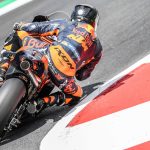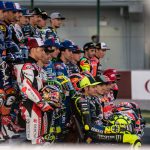“At least there’s still a race on Sunday…” That was a phrase bandied about by a veteran of the press-room a few years back, when he felt million-dollar advertisements and the rising corporate influence of the sport were acting as something of a distraction from the job-at-hand. Sure enough, he was right. Except the Sunday just past saw nothing of the sort. Instead there was a single outing lap by the MotoGP field followed by a host of vehicles plodding around, aiming to sweep away the full effects of the Great British Summer.
On the face of it, sitting around and finding means to seek out shelter from the showers of varying intensity sounds like an outing to forget. But the occasion was fairly remarkable: not since 1980, when the icy reaches of the Alps extended into the valley which houses the spectacular but lethal Salzburgring had a premier class race been called off before the flag dropped and riders set off.
Aside from the uniqueness of this situation in the modern era, there were plenty of reasons to make the treacherous journey home feeling that this was nothing short of disastrous. Silverstone’s flowing, high-speed layout is tailor-made for close racing. Of the four premier class outings held here in the dry since 2013, only one – Maverick Viñales’ inaugural MotoGP triumph – featured a winning margin of more than 0.7s. A drama-packed qualifying session on Saturday, held in half-wet-half-dry conditions, did little to detract from the sense we were in for a real spectacle on Sunday.
Home riders across three classes had aims of facing the crowd from the podium on the outside of start-finish straight at some point on Sunday. Cal Crutchlow was “devastated” by the outcome, feeling “I was in great shape to potentially win the race this weekend.” Bradley Smith and Scott Redding missed a chance to run in what was possibly their last home GP. In the smaller classes Sam Lowes was a match for anyone, wet or dry, and even John McPhee had aims of ascending the order, despite a heavy tumble on Friday morning.
Tickets for the weekend weren’t exactly a snip at £90 – the starting price for general admittance on race day and certain grandstands costing in excess of £150. Throw in the £30 for parking and a wait in the rain was a lousy return on a significant investment.
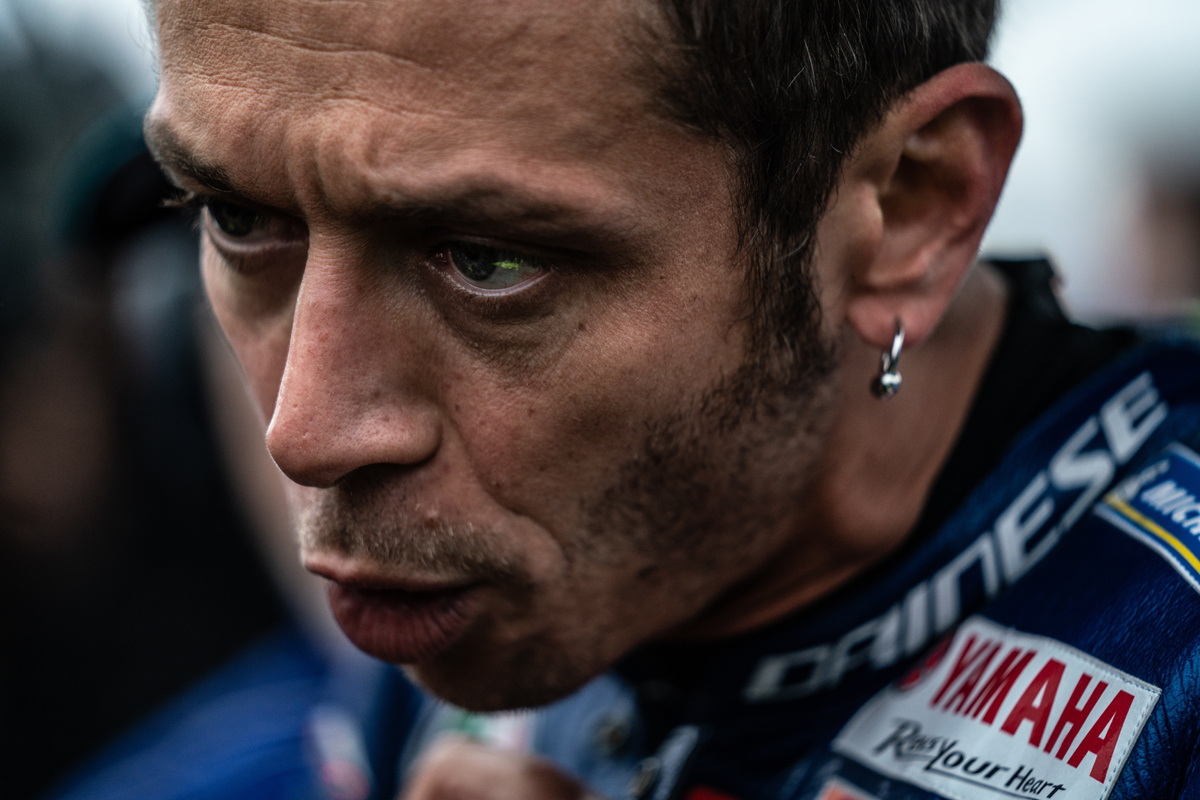
Understandable then, elements of the hardy fans made the trip away from the track feeling as short-changed as they did soggy. But it’s crucial to differentiate disappointment from another emotion; like the one felt by those who overheard Tito Rabat’s screams, picked up by television cameras, after a fall in the closing minutes of Saturday’s FP4 session. Like that nauseating feeling when speaking to a member of his Reale Avintia Ducati team later that evening who described the grizzly scenes in the gravel trap at Stowe, where his rider had been struck by Franco Morbidelli’s sliding Honda RC213V (causing him to “fly three metres,” according to Alex Rins, also caught up in the melee) while attempting to escape to safety. Rabat is now healing after fracturing his right femur, tibia and fibula, while, thankfully, initial fears he had severed his femoral artery were unfounded.
Rest assured, contemplating whether a competitive career is in danger is no fun. Even more so for the rider in question. At least the collective feeling on Sunday evening wasn’t this (it’s worth stating photos of Rabat taking his first steps less than 24 hours after the fall made us all feel more at ease.)
Had the race got underway at the revised starting time of 11:30, organisers could have been guilty of crass negligence in light of Saturday’s near-tragedy. There was so much standing water on the track surface – at the crucial braking points at Stowe, turn seven, and Vale, turn eight – on race day bikes would have begun aquaplaning, a similar sensation to driving or riding a vehicle over black ice. There’s little in the way of control, a sensation that is not to be envied when 23 other machines weighing close to 157 kilograms could be next to you on track.
This was the sensation Rins felt when he had to jump from his Suzuki GSX-RR machine at over 100mph when approaching the end of the Hangar Straight in FP4. “When I braked, the front tyre was locking fully at [130-135mph] so no time to reduce the speed,” he later said. Current championship leader Marc Marquez also described the terrifying sensation when aquaplaning on Sunday: “You try to brake and it doesn’t work. You just go straight. You cannot turn or do anything.” Expecting 24 bikes vying for position to navigate a safe passage around the track in such conditions would have been naivety in the extreme.
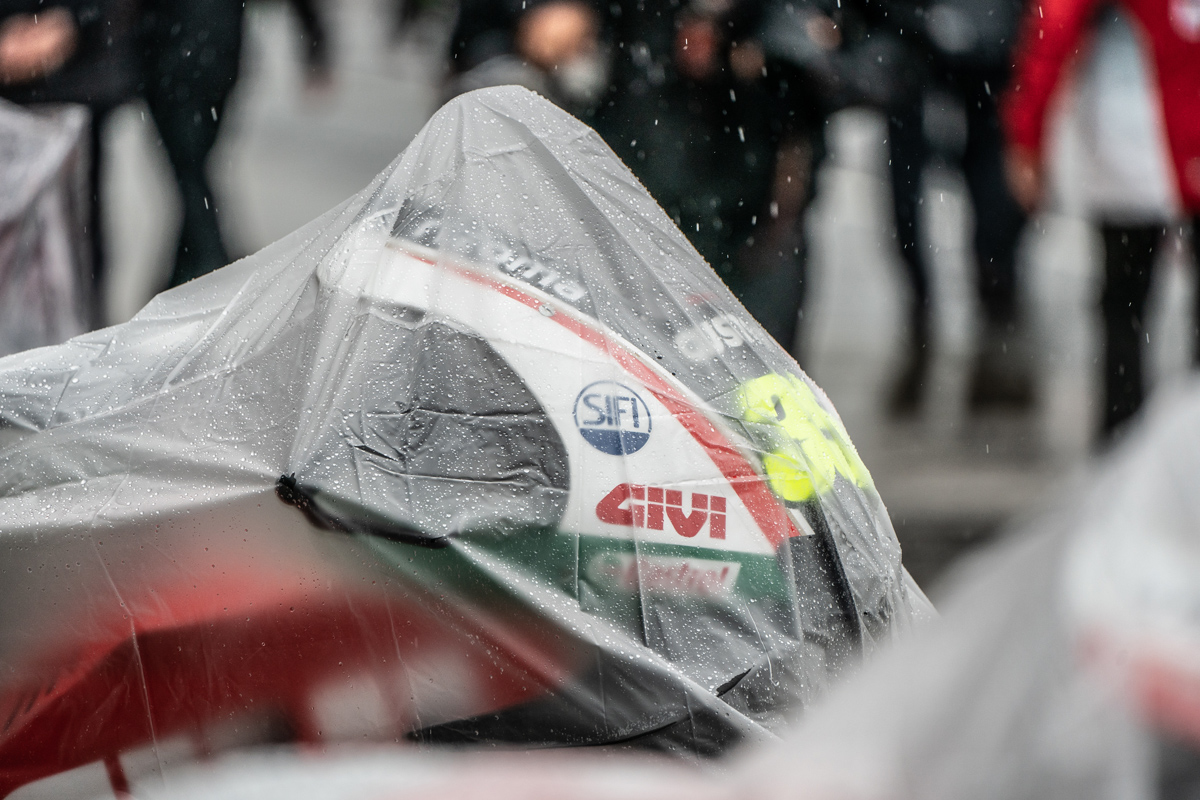
Sustained spells of rain were relentless around 11:00 and 14:30. Yet there were windows in which rainfall amounted to little more than light showers. Of the 23 MotoGP riders at the track, five (Jack Miller, Johann Zarco, Scott Redding, Loris Baz and Crutchlow) felt it was possible to race at some point. But as Marquez explained, “There were ten minutes from 2-3pm where it was possible to race but who could guarantee by lap three heavy rain would not start on the back straight and we would arrive there with everyone aquaplaning…” As a fellow competitor lay in the nearby Coventry hospital, nursing serious leg injuries, the dangers of such conditions were still playing on the minds of many. “We have one mate in the hospital with a very big injury,” said the reigning world champ. “So we considered the safety first of all and there was no way.”
On this matter series organisers Dorna should be commended. Riders were given the final say, even if it spelled out an unprecedented outcome in modern times. Race Director Mike Webb’s understanding of the riders’ predicament is a far cry from the days of 1979 when Kenny Roberts Senior was joined by a list of the premier class elite as they sought to create the World Series, an alternative to grand prix whereby riders had a greater say on safety matters.
So at whom should frustrations pointed? Rain on Sunday was never heavier than what we saw in 2011 or 2015, the last full-wet races held at the Northamptonshire venue. Race Director Mike Webb was unequivocal when seeking out the was at fault: “With the new surface is the first time we’ve had quite so much standing water in critical places on the track. [It was] as a direct result of the track surface.”
Aggregate Industries was the company hired to resurface the 3.6-mile track at the beginning of this year. There was little doubt that not only did the track’s notable bumps remain. But water from light, sustained showers could not drain. All in all, it was something of a botched job.
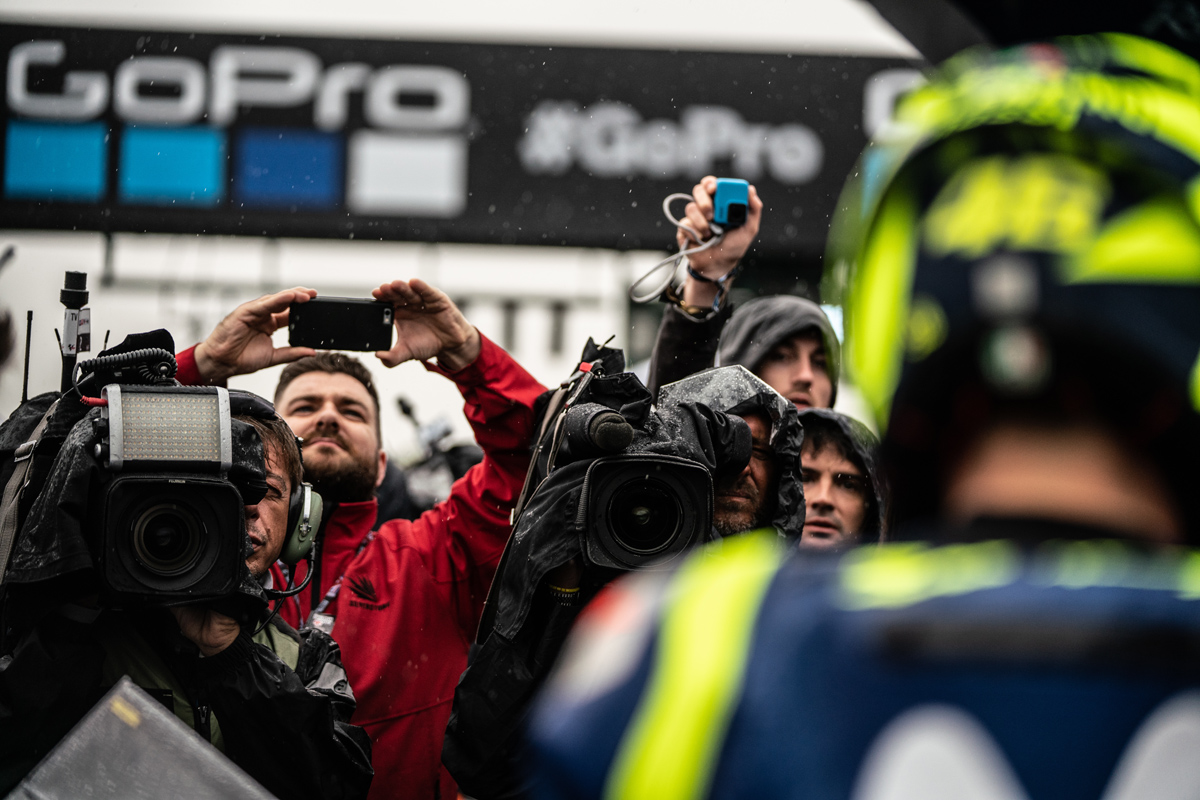
It was thus disappointing to hear Stuart Pringle state drainage from the track was not the issue on Saturday. According to Silverstone’s Managing Director, the incident at the close of FP4 was simply a consequence of force majeure, or a “biblical downpour,” as he put it. Sure, there was a record low level of rainfall during the summer months. But those working at the track surely had previous opportunities to assess how the water was pooling.
At the end, we only had statements from Silverstone and Aggregate Industries promising investigations in the coming days. “We are working in close partnership with Silverstone and will be conducting a full review of the track resurfacing over the next few days to better understand the issues caused by the extremely wet conditions on Sunday,” a spokesman for Aggregate Industries told On Track Off Road. “We will continue to make resources available to assist our client during this difficult period.”
To the track’s credit, works were completed on Saturday night to ease drainage. But that ultimately counted for little the following day. Silverstone is not in the best bill of financial health, and undertaking an operation to have the surface re-laid will be as costly as it is face reddening. It’s also clear the FIM will have to take a more ‘hands on’ role in overseeing works of this kind to tracks on the current calendar, too, with Dorna CEO expressing as much in the Spanish press this week.
As avoidable as this situation was, the feeling that riders had wimped out of racing is so far wide of the mark it’s almost laughable. They should not be the ones in the firing line. Yes, there was a lack of action to contend with. But disappointment expressed at a lack of on-track action is favourable to replaying an incident that mirrored what we saw in FP4. Better that than having to grieve another injury grave consequences… or even worse. As Marquez mentioned, “One race is one race, but life continues and in two weeks we have another”.
Words by Neil Morrison @NeilMorrison87
Photos by CormacGP @CormacGP


